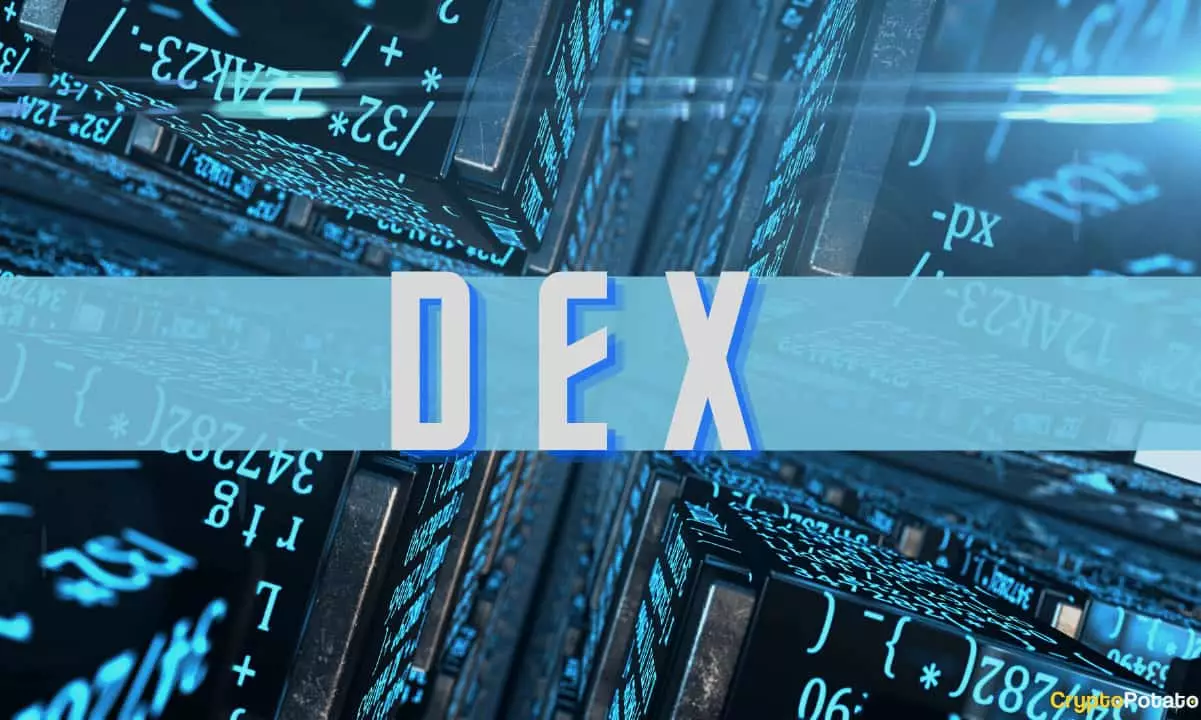Decentralized finance (DeFi) has been on the rise in recent years, with cryptocurrency markets experiencing a surge of interest and activity. While decentralized exchanges (DEX) have traditionally had lower trading volumes compared to centralized exchanges (CEX), the recent market rally has led to an increase in DEX activity, albeit at a somewhat slower pace.
Major platforms such as Uniswap and Curve on the Ethereum blockchain, as well as Pancakeswap on the Binance Smart Chain, have noted a surge in activity. According to research from Kaiko, the monthly trade volume on DEXs rebounded to $29 billion in November, recovering from a multi-year low in September.
However, it’s important to note that despite this improvement, the DEX trade volume still falls significantly short of the all-time high recorded in May 2021, which was over $124 billion. This suggests that while there has been some recovery, DEXs have not fully regained their previous market share.
Over the past year, the market share of DEX trade volume compared to CEX has declined. In January, DEXs accounted for 5% of the market share, but by November, that number had dropped to just 3%. This is in stark contrast to November 2020 when DEXs achieved their all-time high market share of 10%.
The decline in DEX market share can be attributed to several factors. One significant factor is the low market participation observed since the collapse of FTX, which particularly affected DEXs. Additionally, the pressure from regulators on centralized cryptocurrency exchanges also impacted DEXs, contributing to their decline in market share.
Despite this decline, the largest DEX, Uniswap, still holds a significant position at 40% of the market share, although it has seen a reduction relative to Coinbase.
One indicator of increased DEX activity is the rise in lending rates, particularly for stablecoins. Higher lending rates suggest a rise in the number of loans taken out, often for trading purposes. This indicates a growing interest in decentralized finance and the utilization of DEXs for trading activities.
However, it’s worth noting that the signs of recovery observed in the later part of Q1 did not sustain the upward trend in Q2. The turbulent market conditions resulting from regulatory pressure and other factors affected both centralized and decentralized exchanges. In Q2, the spot trading volume on the top 10 DEXs decreased by over 30% compared to Q1.
Looking at the performance in Q3 of 2023, CoinGecko reported that THORchain experienced significant growth, with its volume increasing by 113%. However, this surge in volume may be partially attributed to illicit transfers occurring on the network involving notable users such as the FTX hacker and the North Korean Lazarus group.
On the other hand, Sushi, which had been a prominent presence on DEXs since its establishment in 2020, fell out of the top 10 during this period and was replaced by Orca. This highlights the ever-changing landscape of DeFi, where new projects and tokens can quickly gain or lose traction.
The resurgence of decentralized exchanges indicates a growing interest in decentralized finance. Although DEXs have not fully recovered their previous market share, the recent surge in activity and lending rates suggest a renewed interest in utilizing DEXs for trading purposes. With the evolving landscape and the potential for new projects to gain momentum, it will be interesting to see how decentralized finance continues to shape the future of the cryptocurrency market.

